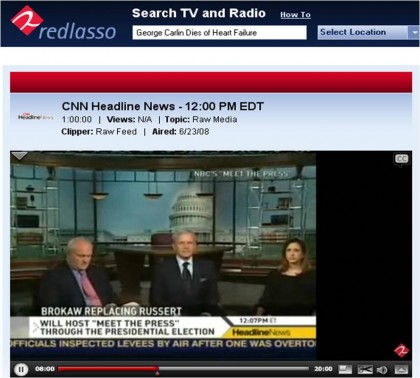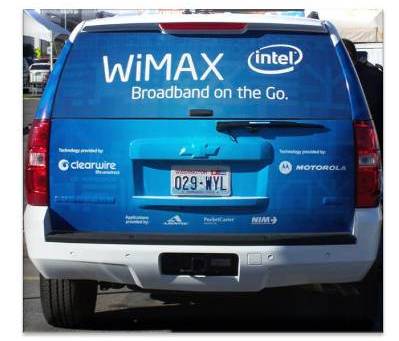The idea behind RedLasso is deceptively simple. The service lets bloggers search and share TV clips online. Unfortunately, once you get past that one-line description, things get a lot more complicated. What about copyright? Distribution agreements? Who should get paid for content reuse? After sitting down with RedLasso’s CEO Kenyon Hayward, I came to two conclusions. First, most people are looking at RedLasso from the wrong angle. And second, if TV networks don’t start signing deals with the company, they’ll find they have to build or buy an equivalent service in the near future anyway.
Above everything else, I now think of RedLasso as a reference tool. The company catalogs broadcast content and brings it to a platform (the Web) suitable for searching and sorting. Broadcasters should love this. It creates a way for them to monetize chunks of their content without having to do a speck of work. You know all that money broadcasters have made off traditional syndication deals? RedLasso gives them an opportunity to do the same thing on the Web, but with news instead of entertainment, and in a format that works for the online world – short clips supported by embedded advertising from video ad networks.
 So why are the networks sending RedLasso cease-and-desist letters? Ken Hayward makes clear that RedLasso isn’t interested in replaying network shows for free online, and raw content is only available for a limited period of time. Presumably the networks are concerned because they’re still hung up on the control issue. It’s their content after all. Shouldn’t the networks get control over how it’s used?
So why are the networks sending RedLasso cease-and-desist letters? Ken Hayward makes clear that RedLasso isn’t interested in replaying network shows for free online, and raw content is only available for a limited period of time. Presumably the networks are concerned because they’re still hung up on the control issue. It’s their content after all. Shouldn’t the networks get control over how it’s used?
The answer of course is: not anymore. Ceding control to viewers is what has made Web video so popular. And the fact that RedLasso can help the networks make money on such a turbulent platform should be appealing. If the networks don’t recognize that now, they’ll likely come to understand it as Web video viewing continues to skyrocket in the coming months and years.
Now here’s the reality check. RedLasso has a lot going for it, including huge viewership numbers, but it’s got a lot of obstacles too. Even with the money the company’s raised, it’s bringing in no revenue right now because it won’t roll ads until content deals are in place. It can keep going for a while, but given how notoriously slow-moving big media is, the question arises: Can RedLasso survive long enough to bring the networks on board and achieve real legitimacy?

